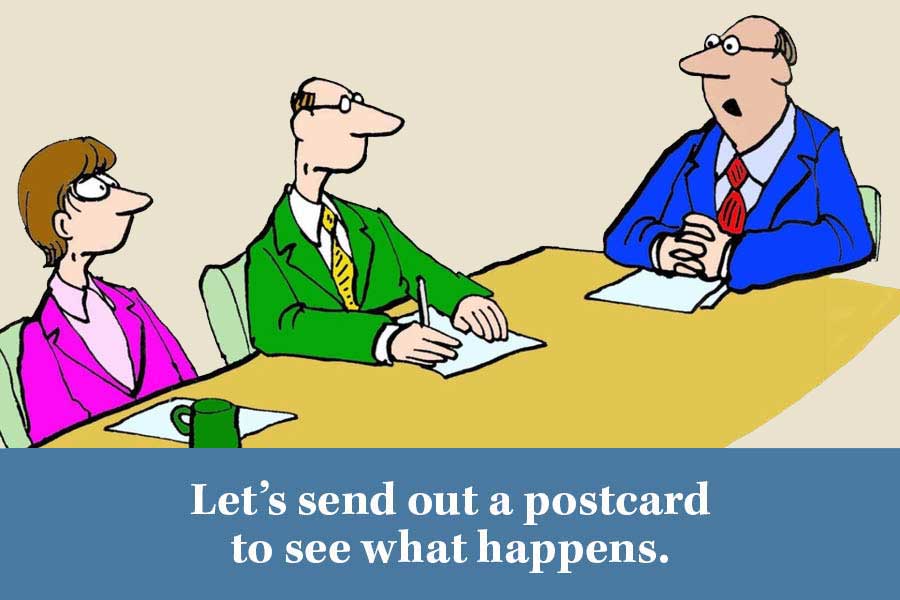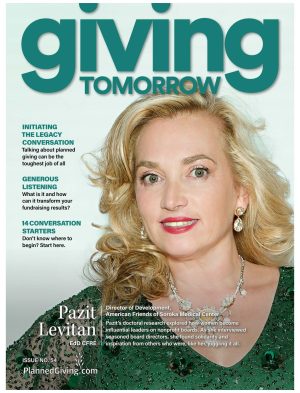To remind you, I’m not a planned giving particulars person. That requires book smarts. I’m a planned giving marketing person.
That, takes street smarts.
Marketing drives this nation, businesses, and nonprofits. It even drives “boy meets girl.” You market yourself a certain way, you get to meet that certain guy or gal. If you’re single, think about this seriously. (Read Karen Martin’s article I Want to Meet a Rich Guy: It’s true, funny, and she ties it well to planned giving.)
I am amused when a client hires us and then tells us what to do. My favorite inquiry is, “We’d like to send out a planned giving postcard and see if something will happen.”
Nothing is going to happen.
Nothing is going to happen.
Marketing 101: One-shot deals don’t work. It’s like wanting to meet that one guy or gal by going to a single social event just once in your life.
Businesses are great at marketing, most nonprofits are not.
Nonprofits mainly rely on reputation. At a time when businesses are learning from nonprofits, how come it’s not happening the other way around, too? For example, one thing I learned from nonprofits is culture: the client does not come first, my employees do. Because if I treat my employees right, they will treat my clients right.
Think Direct Response
The most powerful marketing people are the ones in direct response. They know what they are doing: you send out something with an offer, over and over again. If you stop, that gap sets you back. Repeat, over and over again.
The fundamental principle here is that you’re talking to small, yet highly interested and motivated prospects who have a high level of intent. So it is important not to bust your budget on your entire mailing list. These are your loyals. Single them out and market to them monthly. This should be a small group. Over and over …
You are not going to get their attention with a 132 character tweet or a 2-minute video and a sales letter with two syllables. You may get “likes,” but that’s it — and you can’t bank “likes.” Besides, if you are interested in social media, remember that it’s a full-time job. I advocate it only if you are committed to it. I post on LinkedIn twice a week, on my blog 3 to 6 times a month, and write two articles for our exclusive magazine, Giving Tomorrow™ (free of charge for clients, also available by subscription. Submit an article if you meet our tough guidelines).
Speaking of jobs, what’s yours? Is it to market, or attend endless seminars on calculators and CRUTs, CRATs, and CRAPs?
My advice: stick to marketing. It’s harder, but more rewarding. Much more.
Categories: Planned Giving Marketing, Marketing Planned Giving






